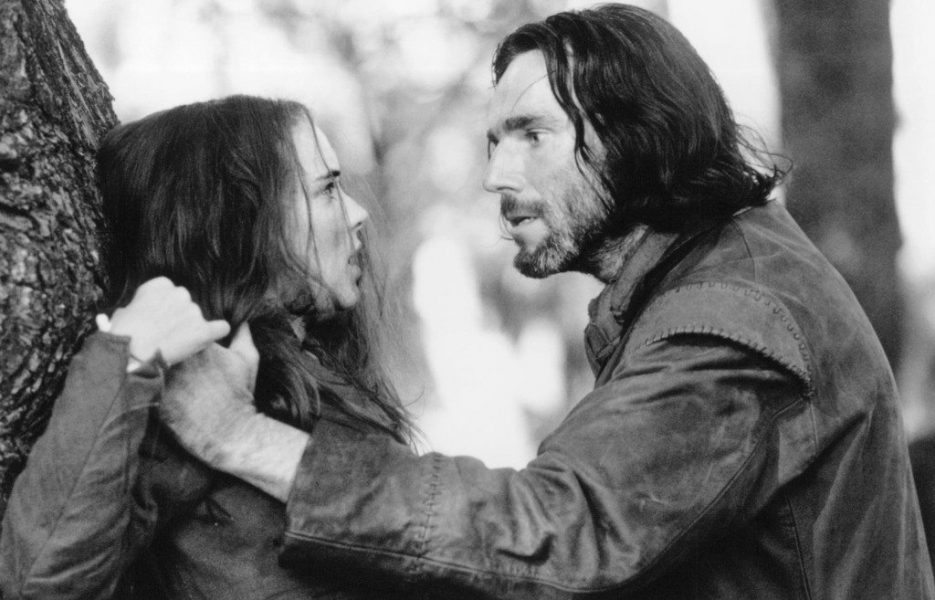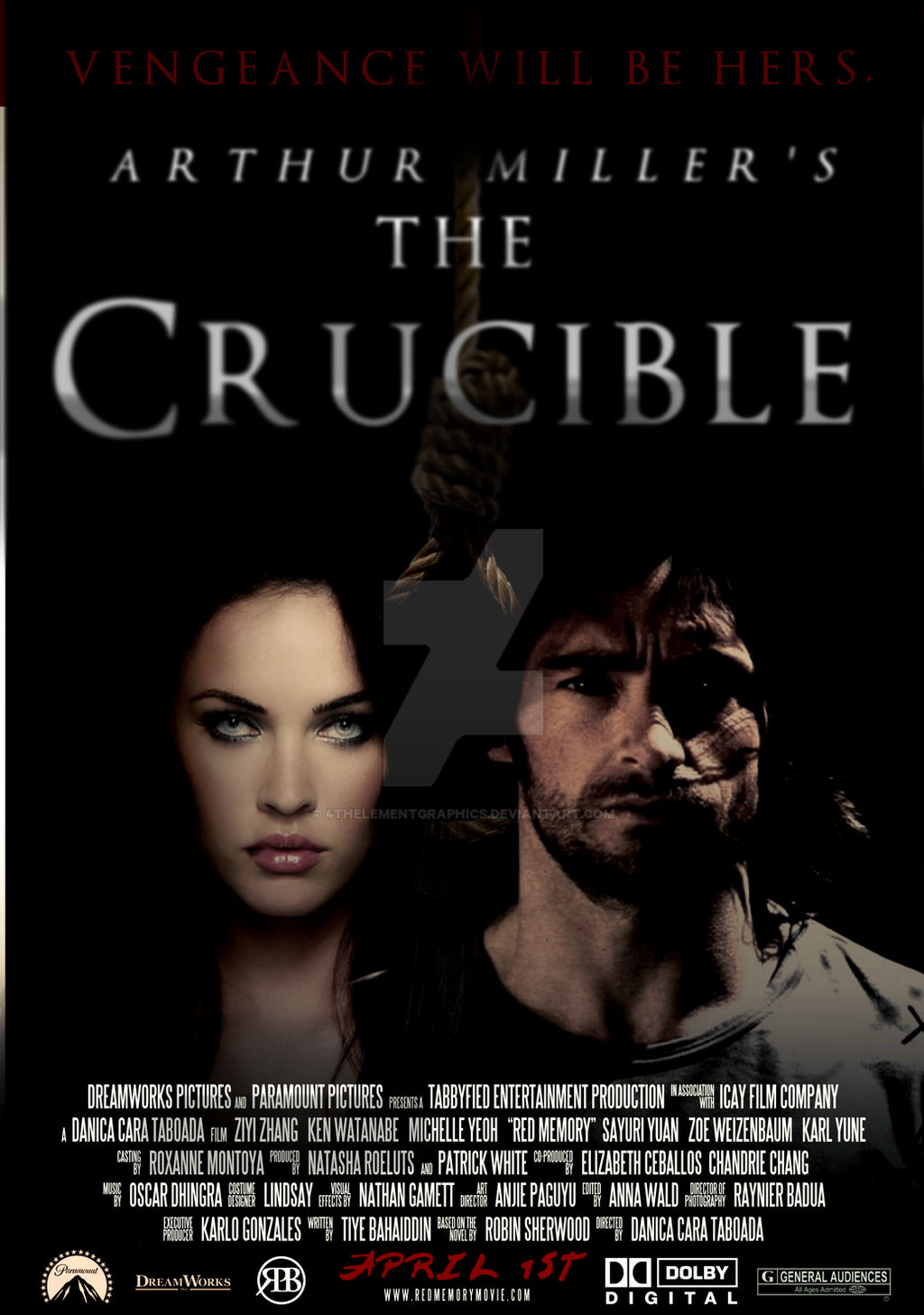Next, Tituba was not whipped into confession in the play, whereas she was in the movie. This was most indefinitely added to show that the profession was typically not made willingly. One had to be forced one way or another into confessing, to save their skin or their life. Also, around the time of this scene is one where Abigail and John Proctor have a conversation. In the movie, Abigail kisses John Proctor and he throws her off of him, which did not occur in the play. This was no doubt inserted to show the audience that Abigail was oddly and obsessively lusting over the man while he was making a sincere attempt to get over her. Another significant change is in the character portrayal. In the play, Parris seemed to be overly egocentric and self-conscious. He is still thus in the movie, but is more whiny, and annoyingly so. Putnam, also, seems to have a personality change. In the play, his personality is not so domineering as in the movie, where he is bordering on psychotic. His role seems to be made larger and more significant in the movie, which presumably accounts for the change in character representation. Another difference is the presence of three judges in the movie, whereas in the play there were only two, both of whom where made out to be 'bad guys.' One additional judge is added in the movie possibly to show that it was not the entirety of the Church that was unjust, cruel, and nearly ignorant. I

The Crucible Movie Vs. The Play (text) August 26, 2020 by Essay Writer. Over the years many movies have been made based upon famous plays or books. Often times these movies are successful in portraying the play-writer’s images and thoughts for the play or book. Arthur Miller’s play, The Crucible and the movie version have many differences.
The Crucible Movie
Arthur Asher Miller (October 17, 1915 – February 10, 2005) was an American playwright, essayist, and figure in twentieth-century American theater. Among his most popular plays are All My Sons (1947), Death of a Salesman (1949), The Crucible (1953) and A View from the Bridge (1955, revised 1956). The Crucible - Arthur Miller.pdf. Displaying The Crucible - Arthur Miller.pdf. The Salem witch trials of 1692 are brought vividly to life in this compelling adaptation of Arthur Miller's play, directed by Nicholas Hytner ('The Madness of King George'). A group of teenage girls meet in the woods at midnight for a secret love-conjuring ceremony. While the other girls attempt to cast love spells, Abigail Williams (Winona Ryder) wishes for the death of her former lover's.
The Crucible Movie Review
Miller's play is about religious hysteria fanned by repressed and denied sexual lust. During the course of the action there will be an outbreak of accusations of witchcraft--all of them false, most of them inspired either by sexual revenge or misguided holy ecstasy. When the play was first produced, it was easily decoded as an allegory about the anti-communist frenzy of the McCarthy period. Today, ironically, we have come full circle; we are no longer paranoid about communists, but we are once again paranoid about Satan-worship.

Perhaps every age gets the “Crucible” it deserves. Anyone who has seen the recent documentary “Paradise Lost: The Child Murders of Robin Hood Hills” will recognize in its portrait of a small Arkansas town many parallels with this fable about Salem, including those who mask their own doubts in preemptive charges of Satanic conspiracies. (Would Satanism die out altogether if not for the zeal of its opponents in publicizing it?) At the center of the story of “The Crucible” is one moment of unguarded lust, in which a good man named John Proctor (Daniel Day-Lewis) commits adultery with a saucy wench named Abigail Williams (Winona Ryder), his servant girl. She is one of the naked moonlight dancers, and is furious because she was rejected by a repentant Proctor, and dismissed by Proctor's wife Elizabeth (Joan Allen). After being witnessed in the midnight revels by the Rev. Parris (Bruce Davison) and charged with unholy behavior, she counters with accusations against Proctor.


The Crucible Movie 2020
Parris is a narrow man but not a bad one. He brings in a consultant, Rev. Hale (Rob Campbell), who forces one of the other revelers to confess. (She is a slave from Barbados who allegedly tutored the local girls, although it is hard to imagine class and racial barriers being so easily crossed at that time.) Soon the whole village is abroil with accusations and counter-accusations. Hale begins to suspect some of the motives, but events have been set inexorably in motion. An experienced witchhunter, Judge Danforth (Paul Scofield), is brought to town, takes an early hard line against witchcraft, and then finds it impossible to back down, even as the evidence seems to be evaporating. He fears losing face--and believes obscurely that *someone* should be punished, lest witchcraft seem to be condoned. This is of course the same dilemma faced by all Satan-floggers: Without Satanists to flog, they'd be out of a job.